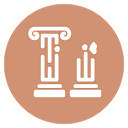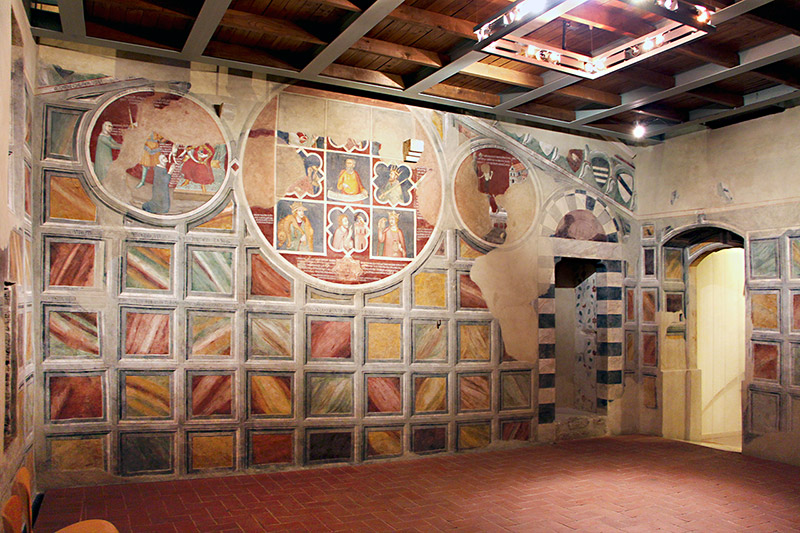SHARRYLAND


Corboli Palace Museum
Art, archaeology and medieval knowledge in the heart of Asciano



Where is

What it is and where it is
In the center of Asciano is a palace rich in history and stories. The sober facade does not deceive you; there are plenty of reminders here of the powerful Bandinelli family, who inhabited it. But the palace's riches are not limited to those of the family. Articulated in the three floors that make up the building is a museum that collects archaeological finds from Etruscan times in the archaeological section, while it devotes its second section to the collection of sacred art. Everything comes from around Asciano and keeps the history of the Crete Senesi alive and vibrant.
Why it is special
One would not expect to find so much wealth stored in the heart of a hamlet of 5,000 people or so. Etruscan urns, Roman coins, parade chariots, gold backgrounds, Renaissance tables, large counter-reformed canvases, painted statues... In one of the rooms of the archaeological section there is even a reconstructed war chariot, or more likely parade chariot, found in fragments as part of a funerary outfit. It is impossible not to feel the truly magical atmosphere of the whole, not least because you are immersed in a palace that is itself a work of art.
Not to be missed
You surely know the expression "if these walls could talk...". Here, these do, albeit in a somewhat cryptic way. In fact, Palazzo Corboli preserves two rooms with medieval painting cycles with a philosophical theme. In the Hall of Aristotle is depicted the Wheel of Barlaam (you'd like to know what that is right?), while in the Hall of Seasons illustrious men point us to the most politically and ethically correct behaviors. Or rather, the two painters, Cristoforo di Bindoccio and Meo di Pero, who make this cycle of exempla.
A bit of history
The history of Palazzo Corboli, like that of Asciano and Siena itself, is deeply linked to the Bandinelli family, However, before them there was certainly no shortage of activity in the area, so much so that there are numerous Etruscan artifacts housed in the museum that come from the nearby tombs of Poggio Pinci, Molinello, or the excavations of Campo Muri in Rapolano. When the village began to be populated with noble summer residences, artists and commissions for works for churches and altars also arrived.
Trivia
In the largest room, in one of the frescoed scenes, a tower also appears, above the top of which protrudes a hand holding an axe. It is not known what it means; for some it is a not even too veiled allusion to the name of the town, Asciano, and the tower seems to resemble the one known as the Orologio, which is located halfway along the main street. The most popular hypothesis is that the village is named after the Etruscan family of Axia, which was numerous in this area. There are also those who link it to Aschio son of Remus and twin brother of Senio, the founder of Siena, but that is another story!
 Interior hall of Aristotle with frescoes attributed to Cristoforo di Bindoccio and Meo di Pero - Ph: Sailko (CC BY 3.0)
Interior hall of Aristotle with frescoes attributed to Cristoforo di Bindoccio and Meo di Pero - Ph: Sailko (CC BY 3.0)
Enter the Map of Italy's Undiscovered Wonders and find treasures where you least expect it... Inspire, Recommend, Share...
Collections
The Map thanks:
Enter the Map of Italy's Undiscovered Wonders and find treasures where you least expect it... Inspire, Recommend, Share...
Where is

Collections

